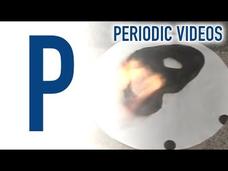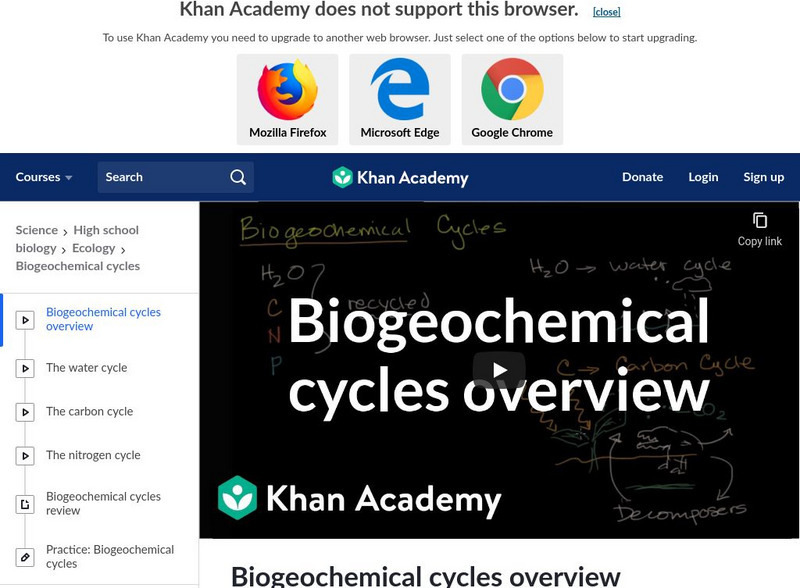FuseSchool
What Are Fertilisers?
What are fertilisers? Fertilisers help to plants grow, thus increasing crop yields. They contain helpful nutrients and minerals like nitrogen, potassium and phosphorous which aid in plant growth. Excess fertilisers washing off fields...
Curated Video
The Health Benefits of Maize
Maize contains many nutrients that keep our digestive and other body systems functioning properly. Learn about the nutrient profile of maize and how it's helpful for our bodies. Maize part 2/5
FuseSchool
What Are Allotropes? Non-Metals
In this video we will looks at what allotropes are, and different examples of them. The term allotrope refers to different forms of the same element. Diamond and graphite are made of only carbon atoms – yet they exhibit very different...
Science360
Sustainable Agriculture Engineering a win-win solution for poultry litter - Science Nation
New technology converts chicken manure into an eco-friendly revenue stream for farmers Description: Lee Blaney's lab at the University of Maryland, Baltimore County, smells somewhat like a barnyard, and with good reason. With support...
TMW Media
The Everglades Ecosystem: Manmade projects to help the everglades
What mechanical process was created to help the natural process in the everglades? What is needed to learn in order to help maintain ecosystems? The Everglades Ecosystem, Part 4
Professor Dave Explains
Periodic Table Part 6 Pnictogens (N, P, As, Sb, Bi, Mc)
It's time to check out Group 15 on the periodic table, the pnictogens. This includes nitrogen, phosphorus, arsenic, antimony, bismuth, and moscovium. What can we say about their properties, reactivities, and applications? Let's find out!
Curated Video
The Importance and Dangers of Phosphorus
This video provides an overview of the element phosphorus and its significance in various aspects of life. Phosphorus is a vital element found in the human body and plays a crucial role in DNA, RNA, and energy transfer in cells....
FuseSchool
Plant Nutrition
Where do plants get their food from? Remember they are autotrophic, plants make their own food through the process of photosynthesis. In order to make all of the macromolecules, the plant needs to obtain some other elements from the...
EarthEcho International
Regenerating Marine Ecosystems: Agricultural Runoff and its Impact on the Everglades and Coral Reefs
Regenerating Marine Ecosystems part 1 of 2: The video explores how agricultural runoff in the Florida Everglades is affecting downstream coral reefs and marine life. It highlights the importance of restoring the natural Everglades...
Curated Video
Bosnia - Silajdzic Pleads For NATO Air Strikes
Bosnian Prime Minister, Haris Silajdzic, on Wednesday (24/5)
criticised the U.N.'s refusal to request NATO air strikes against
Bosnian Serb positions to stop the latest shelling of Sarajevo. He
said he had given up hope of U.N....
AFP News Agency
CLEAN : Business as usual on the Bosphorus, despite war
Across the rising silhouettes of Istanbul's skyline that stretch out into the Bosphorus, ships registered in Russia come and go in both directions (Footage by AFPTV via Getty Images)
Bozeman Science
Environmental Matter Exchange
Why did carbon marry hydrogen? They bonded well from the minute they met. Here is a video that focuses on the essential chemicals for life: water, carbon, nitrogen, and phosphorus. It relates each of these to macromolecules and the way...
Learning Games Lab
The Olsen Test for Phosphorus
A short video teaches viewers about the Olsen Test, a soil test specific for plants grown in arid regions. The soil in arid regions has a higher pH and plants require special treatment to thrive. The video provides information about the...
Howard Hughes Medical Institute
Termite Activity Enhances Ecosystem Productivity and Stability
Termites in your house? Bad. Termites in your garden ... good? Discover the good side of an insect that often gets a bad rap with an interesting animation. The narrator discusses how termites break down plant material, what the soil...
Periodic Videos
Phosphorus
The original discovery of phosphorus, extracted from urine, paved the way for the 13 different types of phosphorus we know today. The 15th video in a series of 118 on chemical elements discusses phosphorus. It covers the basic facts...
Socratica
What Are CHNOPS?
It's the stuff of life! Where would we be without CHNOPS? Biology scholars discover the elements essential to life with a video from an engaging biology playlist. Topics covered include lipids, proteins, and DNA, as well as the trace...
American Chemical Society
What Makes Blue-Green Algae Dangerous?
Sometimes the little things cause the most damage. Scholars watch a video in the ACS Reactions playlist to learn about algal blooms. They listen to an explanation about how these blooms form and how they are harmful to people and the...
Bozeman Science
Biogeochemical Cycling
A woman had a job crushing cans at the recycling plant; it was soda pressing. Video focuses on the ways our environment recycles, including the water cycle, carbon cycle, nitrogen cycle, and the phosphorus cycle. It also describes the...
Crash Course
Nitrogen and Phosphorus Cycles: Always Recycle! Part 2
We wish you a happy, healthy, and phosphorus school year! A video explains the importance of getting the nutrients that are needed and focuses on the nitrogen and phosphorus cycles. It includes discussions on the importance of...
Crash Course
Pollution
An environmental science video covers natural and synthetic compounds and the impact they have on the environment. It includes carbon, nitrogen, phosphorous, cyanide, mercury, sulfur, nitrogen dioxide, and endocrine disruptions.
Khan Academy
Khan Academy: Biogeochemical Cycles Overview
Introduction to how water, carbon, nitrogen, and phosphorus are cycled through ecosystems. [7:55]
Khan Academy
Khan Academy: Ecology: Biogeochemical Cycles Overview
Introduction to how water, carbon, nitrogen, and phosphorus are cycled through ecosystems. [7:54]











